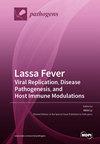油籽萝卜(Raphanus sativus subsp.
IF 3.3
3区 医学
Q2 MICROBIOLOGY
引用次数: 0
摘要
油籽萝卜(OR;Raphanus sativus var. oleiferus)是作为覆盖作物种植的,它具有独特的直根,能吸收前茬作物留下的氮。该项目的目的是研究芹菜栽培品种(cvs.)对棒根病病原菌黄铜疫霉(Plasmodiophora brassicae)的抗性。将 12 个市场上的品种与抗球根病(CR)的冬油菜(OSR;Brassica napus)品种和其他选定的十字花科品种进行了比较。这项研究是在生长室中进行的重复生物测定,使用的是含有铜锈穗菌天然接种体的田间土壤的特殊混合物。结果表明,OR 栽培品种受到感染,这意味着 OR 会繁殖病原体。OR 栽培品种的易感性与 CR OSR 栽培品种 Alister 和 Archimedes 的易感性没有显著差异,但与 OSR 品种 Mendel 的易感性有显著差异。孟德尔。OR 栽培品种的病害严重程度指数(DSI)从 2.3 到 9.3 不等,病害发生率为 3-17%。表现最好的是黑萝卜(Raphanus sativus var.为了实现黄铜类作物的可持续生产,我们建议在轮作(包括 OSR 或其他黄铜类作物)中避免将 OR 用作覆盖作物,因为这有可能增加土壤中的接种体。本文章由计算机程序翻译,如有差异,请以英文原文为准。
Susceptibility of Oilseed Radish (Raphanus sativus subsp. oleiferus) Cultivars and Various Brassica Crops to Plasmodiophora brassicae
Oilseed radish (OR; Raphanus sativus var. oleiferus) is grown as a cover crop and develops a unique taproot, absorbing nitrogen left by the previous crop. The aim of this project was to investigate the resistance of OR cultivars (cvs.) to Plasmodiophora brassicae, the causal agent of clubroot disease. Twelve market cvs. were compared with cvs. of clubroot-resistant (CR) winter oilseed rape (OSR; Brassica napus) and other selected species of the Brassicaceae family. The study was performed as a replicated bioassay in a growth chamber using a specially composed mixture of field soils holding the natural inoculum of P. brassicae. The results show that the OR cultivars were infected, which implies that OR multiplies the pathogen. The susceptibility of the OR cultivars was not significantly different from that of the CR OSR cultivars Alister and Archimedes, but it was significantly different from that of the OSR cv. Mendel. The disease severity index (DSI) for OR cultivars ranged from 2.3 to 9.3, and disease incidence was 3–17%. The best performance was shown by black radish (Raphanus sativus var. niger) with a DSI of 0.3. For sustainable brassica crop production, we suggest avoiding OR as a cover crop in crop rotations, including OSR or other brassica crops, since there is a risk of increasing inoculum in the soil.
求助全文
通过发布文献求助,成功后即可免费获取论文全文。
去求助
来源期刊

Pathogens
Medicine-Immunology and Allergy
CiteScore
6.40
自引率
8.10%
发文量
1285
审稿时长
17.75 days
期刊介绍:
Pathogens (ISSN 2076-0817) publishes reviews, regular research papers and short notes on all aspects of pathogens and pathogen-host interactions. There is no restriction on the length of the papers. Our aim is to encourage scientists to publish their experimental and theoretical research in as much detail as possible. Full experimental and/or methodical details must be provided for research articles.
 求助内容:
求助内容: 应助结果提醒方式:
应助结果提醒方式:


